FOLLOW THE DENALI
Would you like to follow the Denali turboprop on its journey? Fill out the form below to stay informed.
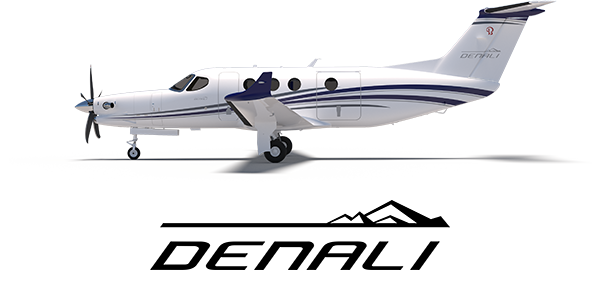
Would you like to follow the Denali turboprop on its journey? Fill out the form below to stay informed.
The Denali has an ergonomically designed pedestal that includes dual touchscreen controllers for its Garmin™ G3000™ avionics. It also features a single lever power for engine control, an electric trim system with a pitch trim wheel for fine adjustment and a minimized profile for easy access in and out of the cockpit. Getting ready to go is as simple as pushing a single button which starts the Denali with a FADEC controlled automated start sequence.
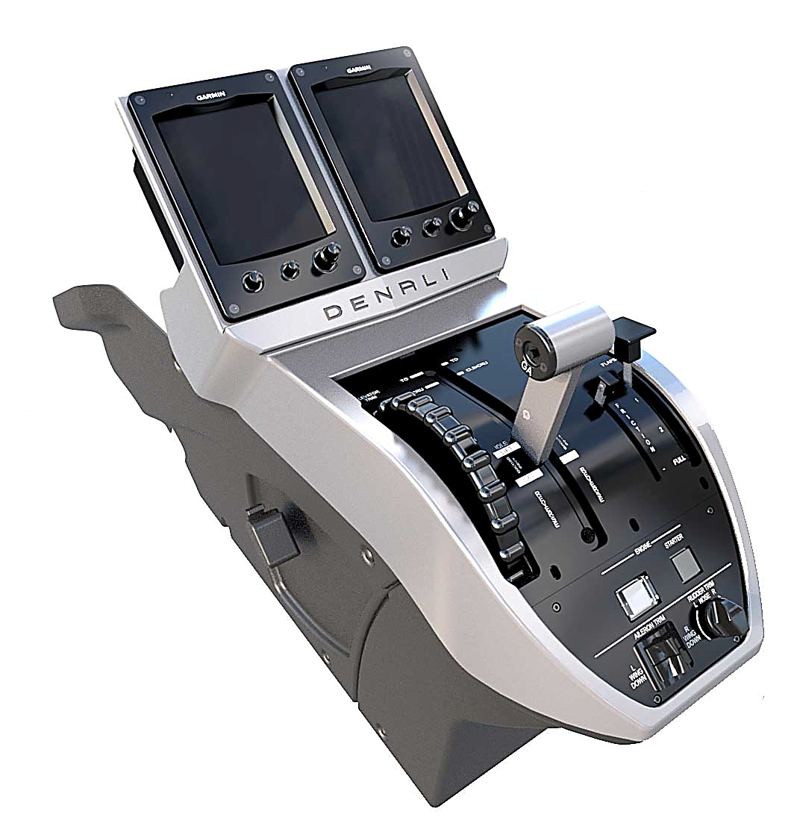
GE Aviation announced the official name for the Denali's
Advanced Turboprop engine on March 7, 2018. The high
technology dual channel FADEC powerplant is now the GE
Catalyst.
The Catalyst™ engine has now entered certification
testing, where GE Aviation will validate its aerodynamics,
mechanics and aerothermal systems. The 1,240 shp-rated engine
introduces 79 new technologies to offer higher efficiency,
better performance and greater durability than other engines
in its class.
With the first engine run and most of the individual component
testing completed, early indications show that the Catalyst
will meet or exceed all the performance numbers quoted.

With the latest mockup build, we now have the first opportunity for customers to experience the full power of the Denali's cockpit - one that revolutionizes the single engine turboprop segment. The Garmin™ G3000™ flight deck modernizes turboprop avionics and significantly reduces pilot workload with dual touchscreen controllers and Automatic Speech Recognition (ASR) technology, allowing pilots to easily perform common tasks and manage the flight deck.
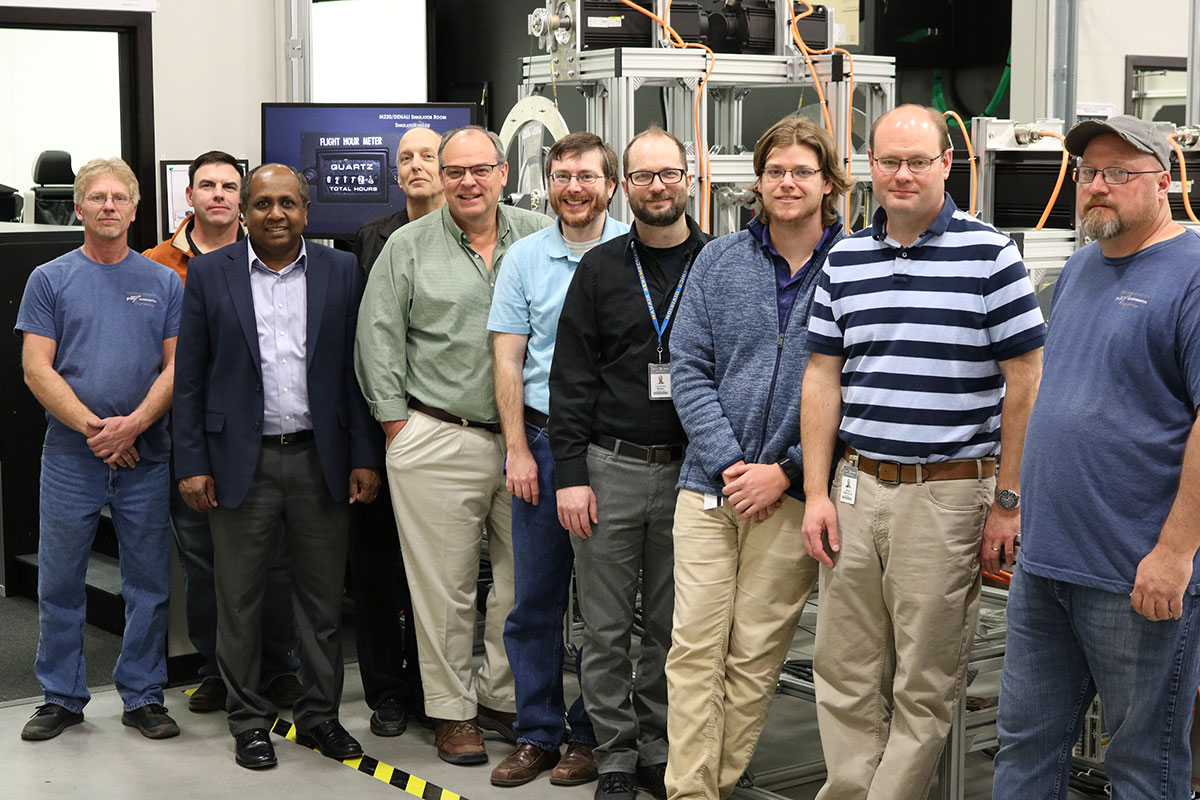
Left to right: Steve Carroll (A & P Mechanic), Patrick Wanless
(Engineer Specialist), Aasiri Fernando (Engineering Manager),
Marc McHenry (Engineer Specialist), Brett Lusby (Engineer
Specialist), John Christensen (Senior Engineer), Courtney
Balzer (Engineer Specialist), Chris Andress (Engineer) , Dan
Oltjenbruns (Engineer Specialist), Rodney Cline
(Avionics Technician)
The Flight Systems Simulator department consists of about ten
engineers. It usually takes one to two years to build a
simulator depending on its complexity and how many models are
being built at the same time. The Denali Iron Bird took about
18 months to build. Because of Textron Aviation's aggressive
investment in new products, there are eight completed iron
birds across multiple models, with three currently seeing
heavy use.
The development program of the Denali single-engine turboprop marked a recent milestone with the successful mating by GE Aviation of its advanced Catalyst engine with the MCCAULEY composite propeller at the test facility in Prague. Watch the video produced by GE Aviation on the progress of the Catalyst.

The 1,300 shp turboprop engine has already completed more than
1,000 hours of testing on three test articles. With the new
composite 5-blade propeller mated, GE Aviation successfully
achieved full power and max RPM and demonstrated the full
range of pitch using a FADEC with integrated propeller
control. The
Denali aircraft is the first new turboprop to employ
a FADEC that controls both the engine and propeller.
GE Aviation's Catalyst engine currently has 98
patented technologies on the engine. It is the first turboprop
engine in its class to introduce two stages of variable stator
vanes, cooled high-pressure turbine blades and a FADEC -
technologies that have proven themselves in millions of flying
hours on GE Aviation's other commercial and military engines.
It performs at an industry-best 16:1 overall pressure ratio,
enabling the engine to achieve 10 percent more power compared
to competitor offerings in the same size class.
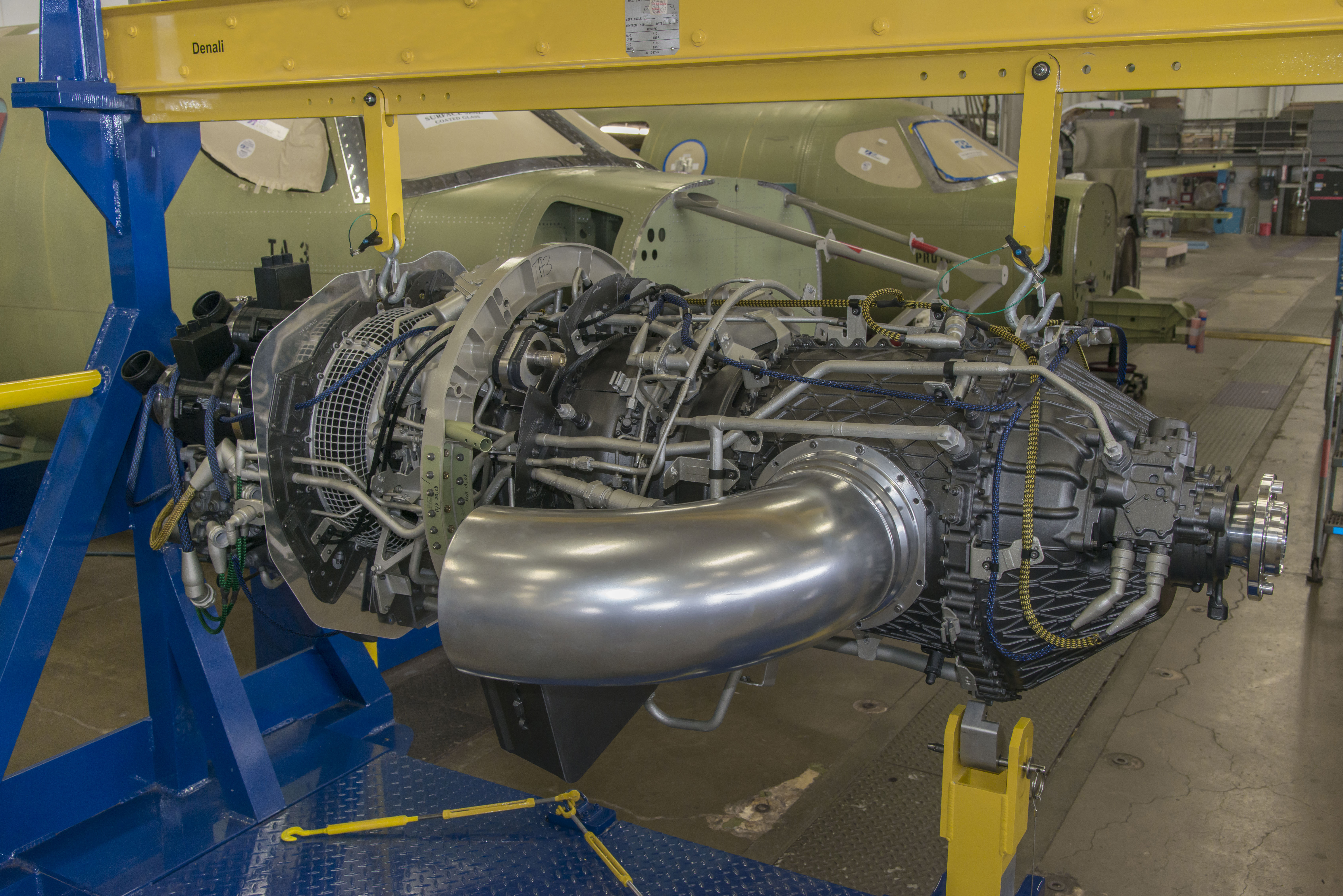
Regarding the Catalyst, GE Aviation recently produced
a 3D printed mockup of the engine used by Textron Aviation
engineers to assess the ease of access for maintenance, once
the actual engine is installed.
Using 3D Fused Deposition Modeling (FDM) techniques, this
plastic mockup is an exact replica printed from the final
computer design that includes various mounting and attachment
holes which was then fitted with other 3D printed or real
attachments such as hoses and required
operational components. The engine mockup is available
for viewing at this year's Experimental Aircraft Association
(EAA) AirVenture Fly-In Convention, July 22-28 at GE
Aviation's booth #373-376.
Apart from the 3D printed FDM mockup, the actual production
engine incorporates similar, but more advanced additive
manufacturing technique to create metal parts. This allows
components like the heat exchangers, that would normally be
constructed using dozens of individual components, to be
manufactured as a one-piece part, eliminating complexity and
increasing cooling efficiency while reducing weight, wear and
leakage. The engine is designed for predictive maintenance
enabling personalized service and improved aircraft
availability.
With a jet-like cabin design, dual-channel FADEC and the first clean-sheet turboprop engine in more than 30 years, the DENALI aircraft is sure to disrupt the marketplace. But behind the features and capabilities of the new aircraft is a team of experts invested in both the plane and those who will sit inside.
They call themselves "The Denali Core Team" and their mission is to deliver Textron Aviation's most advanced single-engine turboprop. However, that's where many of their similarities end. From manufacturing to customer service to marketing, the team is packed full of experts from strikingly different areas all working together to break boundaries.
"The best product comes from the best team," stated Ernie Krusbsack, Denali's Program Manager. "There isn't an individual on this team that isn't enthused and engaged about the product."
Krubsack leads the core team, which is fitting considering his history with Textron Aviation. He's been doing program manager work for nearly 20 years, most recently on the Cessna CITATION LATITUDE aircraft. His expertise lies in gathering innovators in many different fields of aviation and fostering an environment where they work in unison.
"It can be difficult," Krubsack said. "But I find it enjoyable in the sense that you have to get into each person's psyche, and you have to understand what makes them tick."
While Krubsack leads the core team, each member of the team represents his or her own division. It's a challenge they don't take lightly.
"I've been interested in taking on the challenge of lead engineer on a program," Manufacturing Engineer Program Manager Jonathan Braaten said. “When this opportunity became available, my supervisor handed me the keys and said, 'Alright, let's see what you've got.'"
Braaten's push for human factors, ergonomics, and cost-effectiveness on the program stemmed from his manufacturing viewpoint. Others, such as David A. Dorner, emphasized the need for quality aftermarket parts and service options for Denali's Customer Service Team.
"Early in the program, we established best practice, maintainability, and reliability goals to ensure reduced labor hours per flight hour," stated Dorner. "We also monitored the associated design attributes for the platform to improve operational availability."
Major aftermarket advances on the Denali aircraft included the implementation of an industry-leading diagnostic system, comprised of both a Central Maintenance Computer (CMC) and a full-time data recorder (AReS). When combined, the CMC and AReS provide indicated causes for crew alerts and advanced troubleshooting, a major boon for Customer Service representatives. Other on-board solutions already incorporated on the aircraft help to minimize specialized tools and test equipment needed for Denali turboprop maintenance.
The team's use of the Maintenance Steering Group (MSG-3) analysis process further highlighted the unique collaboration on the Denali turboprop. Comprised of a steering committee of operators, suppliers, engineering personnel, and FAA representatives, the team involved in the MSG-3 process provided detailed analysis of every system, structure, and zone of the aircraft for scheduled tasking and maintenance interval requirements.
When other Core Team areas step up to support the needs of other departments in the build, it hasn't gone unnoticed. "This engineering team has been amazing. Very, very responsive," Dorner said of the requested changes from Aftermarket. "That's been very exciting."
That balance often revealed itself in gray areas and processes that had to be tested, developed and finally implemented. Much of the responsibility fell under Brad Bednar, the Experimental Project Coordinator.
"I think I'm just comfortable dealing with ambiguity and then learning something new each day and each week. In this role, if you want to stick to one schedule or one way of doing things, you're not going to absorb all the knowledge," Bednar said. "As the plane gets built, you check and adjust your plan seven, ten, twelve times and see what's the best route to move."
"It becomes a big part of your life," Braaten said about the Denali aircraft. "The Denali turboprop is a high priority program for Textron Aviation, so it's a huge but exciting responsibility."
It's been nearly five years of work for many on the Denali Core Team and that time and investment means passion.
"We're all personally connected to the Denali turboprop," IT Senior Specialist Mark Thomas said. "It's more than an airplane for those of us involved. It's a collection of work from tons of people and the relationships that you build."
Dorner equated the project to other legacy designs when he said, "KING AIR turboprops, CARAVAN turboprops, those have been around for a very long time and I fully believe that the Denali turboprop will be the next one of those. It's an advanced turboprop and I believe it will be here for a long time. I think someday I'll be telling my grandkids, 'I was on that team.'"
Braaten added, "We're doing something that's unique. This is a brand-new clean-sheet airplane and when we're done, I can say our team did that. That'll be out there for who knows how long. Long past my lifespan, I'm sure."
For some, it could be their future left seat.
"Because I have my pilot's license and enjoy the plane aspect of this business, with the Denali turboprop, maybe it's something I'll be flying in the future,” Bednar added.
When that moment comes for the Denali aircraft to leap into the air for the first time, this team says it will be emotional.
"Hair tingling. It happens every time," Krubsack said. "Every time I go to a first flight that I've been a part of, it really tingles the hair on the back of your neck and just gives you the enthusiasm that you get about every five years."
Thomas added, "The first flight is that magic moment culminating years of work."
As that moment nears, the Denali Core Team says it wants to highlight one other thing. It's not just the core team behind this aircraft. It's hundreds of employees on various shifts doing any number of duties who are making this innovative dream come alive.
The launch of the DENALI turboprop will, without question, disrupt its aircraft market segment. But designers, developers and engineers at Textron Aviation want to be sure your trips utilizing the new aircraft are anything but disrupted.
Therein lie two solutions - the Maintenance Steering Group - 3 (MSG-3) and the On-board Maintenance and Diagnostics system. Both tools are implemented with reliability and your bottom line in mind.
MSG-3 is a process developed by the aviation industry and regulators worldwide to develop applicable and effective inspection tasks and intervals for an airplane. Rather than servicing an aircraft based on an uninformed calendar, an aircraft receives maintenance due to its carefully-calculated needs. Those involved with the process say Textron Aviation has used the MSG-3 process as a basis for developing scheduled maintenance on new airplane designs since 2005, though the Denali turboprop will be the first single-engine turbo-propeller aircraft that offers it.
The On-board Maintenance and Diagnostics system is comprised of two different types of system recordings - event-driven (CMC) and full-time (AReS II) functionality. These two systems work together to provide a comprehensive monitoring and reporting system that covers everything that happens on the aircraft, spanning from routine to advanced troubleshooting and analytics. Users can see CMC data, AReS data and time-critical fault data in several places once landed, which can also be transmitted to LINXUS, our customer data portal automatically over Wi-Fi. If immediate, in-flight notifications are warranted, users can arrange for the installation of a special Garmin box called the GSR-56.
Textron Aviation prides itself in supporting you throughout the entire ownership experience. When you embark upon a journey with Textron Aviation, you become part of the family for life. Our teams continue to utilize the most advanced, useful resources to make your experience during purchase and in the aftermarket better and more enjoyable.
Piloted by senior test pilot Peter Gracey and chief test pilot Dustin Smisor, the BEECHCRAFT DENALI prototype aircraft, powered by GE Aviation's new CATALYST engine, took off at approximately 8:20 a.m. on November 23, 2021 from Textron Aviation's west campus at Eisenhower International Airport for its first flight. During the 2-hour and 50-minute flight, the team tested the aircraft's performance, stability and control, as well as its propulsion, environmental, flight controls and avionics systems. The aircraft reached an altitude of 15,600 feet and attained speeds of 180 knots. The following is an exclusive cut of the video for Denali Insiders only.
The new Beechcraft Denali turboprop is accompanied by an engine GE Aviation calls “next-generation.” As sustainability becomes a greater focus of aviators across the world, GE Aviation and Textron Aviation are joining together to provide an aircraft that reduces CO2 emissions, increases efficiency and works with Sustainable Aviation Fuel (SAF).
While we are overcome with joy and confidence that the Beechcraft Denali turboprop's first flight was successful, we expected nothing less. Did you know the Denali aircraft's first flight wasn't the first time the GE Aviation Catalyst engine hit the skies? Before our clean sheet aircraft took off for the first time, the Catalyst engine went through hours of rigorous testing in the sky on the tried and trusted KING AIR turboprop. This allowed engineers to go through extensive tests with a single Catalyst engine and prepare it for the big day of first flight.
Here's some behind the scenes video showing the test on the King Air turboprop. You can see the performance was as stellar as we imagined even before the Denali turboprop took flight.
©2021 Textron Aviation Inc. All rights reserved. BEECHCRAFT, DENALI and KING AIR are trademarks or service marks of Textron Aviation Inc. or an affiliate and may be registered in the United States or other jurisdictions. CATALYST is a trademark or service mark of others.
Flying is an experience that is second to none. From take-off to landing, the time spent in the air brings a unique experience each time. Whether it is for business, or for leisure, there isn't much that can compare.
That feeling may be appreciated even more when you understand how you got there. Not just as a passenger or pilot but knowing how the aircraft carrying you to your destination came to be. As the BEECHCRAFT DENALI turboprop continues its journey as a new aircraft design, rigorous testing has produced pleasing results.
There is a lot of work that goes into creating an exceptional aircraft. So much so, the team dedicated to producing the Beechcraft Denali aircraft has split the work into three pre-production aircraft. "Prototype", "P1", and "P2" each have their own use and purpose offering essential information gathered through testing and analysis.
Well into the flight test process, the three developmental aircraft have totaled more than 800 flight hours while exceeding expectations.

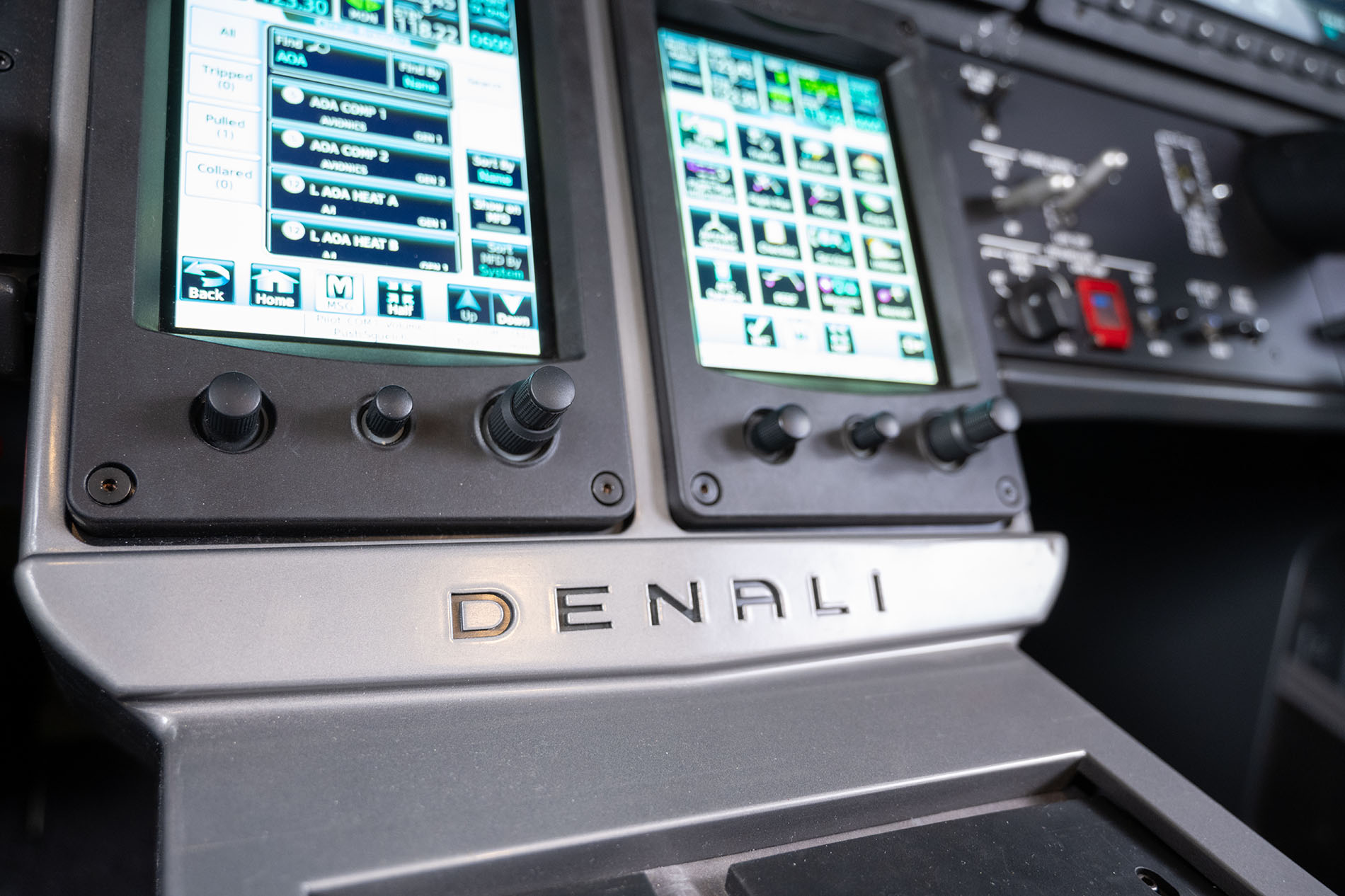
The first prototype commonly referred to as "Proto", lends its focus to studying the stability and control of the aircraft. To fully understand performance numbers, Proto is pushed in terms of speed and altitude, among other factors.
Reaching the maximum operating altitude of 31,000 feet, experiencing stalls at different altitudes, and exploring take-off and landing characteristics are just a few early events that have been pivotal in Proto's development.
As Dustin Smisor, Textron Aviation Engineering Flight Test pilot explained, "Proto gives us that first look at how this airplane works, what it feels like, how the flight controls work and how it operates." Acknowledging the success seen so far, he recognizes there is still work to be done. “As we move into next year, we will continue to look more heavily at the performance of the airplane so things like cruise performance, take-off and landing performance, and flying performance,” he noted. "Really with Proto we learn how the aircraft handles, how it flies in those extreme parts of the envelope that we wouldn't test in P1 or P2."
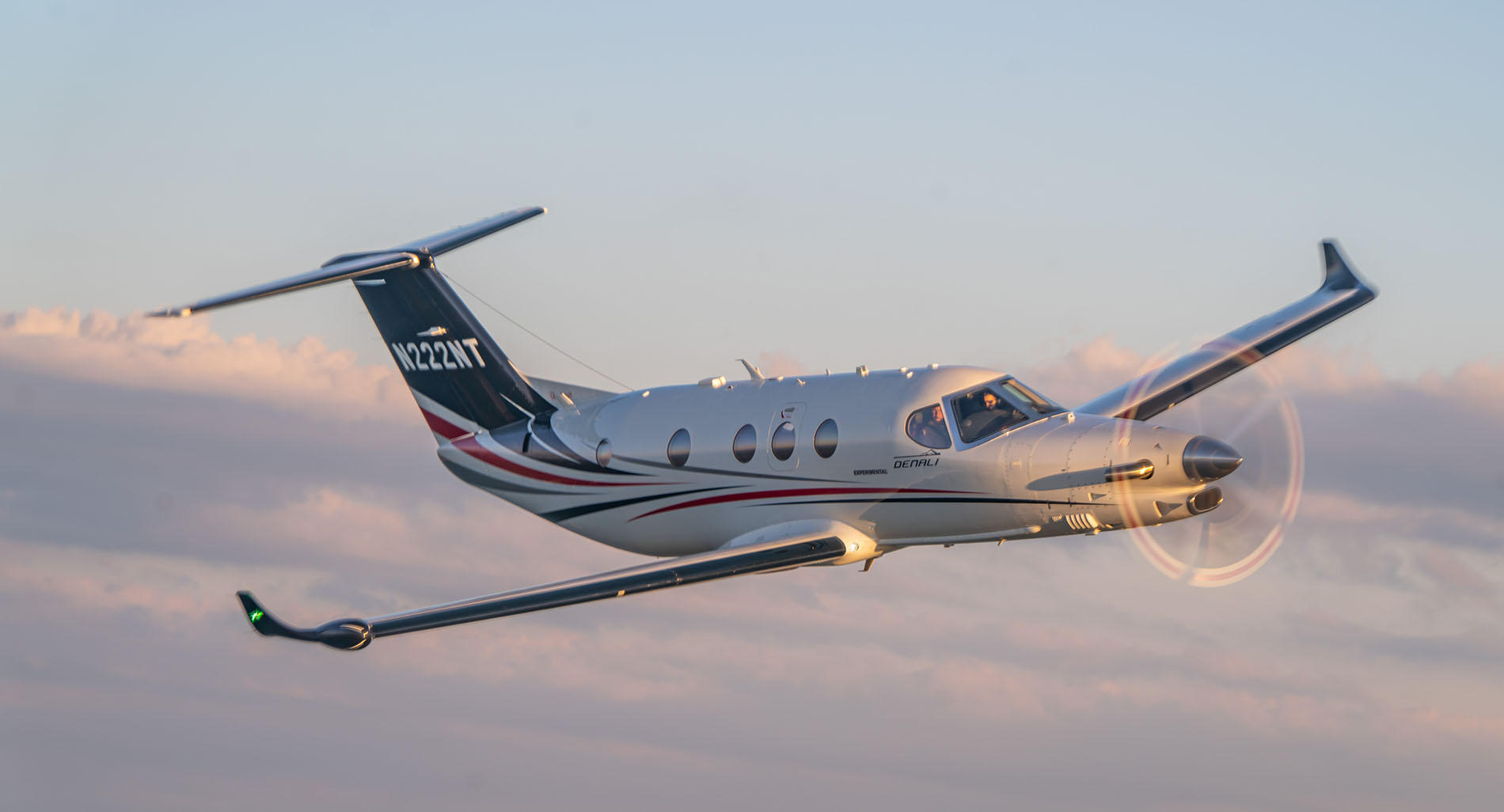
The second of its kind, P1, follows Proto in the pursuit of creating the Beechcraft Denali aircraft, being solely dedicated to examining the engine and systems.
"P1 is our systems test article. We take a deep dive at how things like the engine works, how the environmental control system works, how the landing gear system works, etc." Smisor detailed.
To gain insight into how the engine and systems hold up against harsh situations, P1 often finds itself in extreme conditions. P1 recently faced intense heat in Yuma, Arizona, testing systems in high temperatures. Testing against the heat will continue but P1 will eventually travel to more frigid climates to analyze the systems against extreme cold. Relying on natural weather is ideal, but if it's not available P1 will fly to the Eglin Air Force Base in Florida, where a weather chamber allows for simulated conditions. Smisor noted while most aircraft may never see conditions like these, it is important to understand what the Beechcraft Denali aircraft can handle.
"That takes us to the extremes of the envelope to verify that the systems such as the fuel system, the engine, the electrical system, avionics, brakes, all of those systems continue to work well in those cold and hot environments."
The newest and the final of the group, P2, is just as important as its predecessors. Acting as a representation of what a final product could be, P2 brings the interior of the Denali turboprop to life.
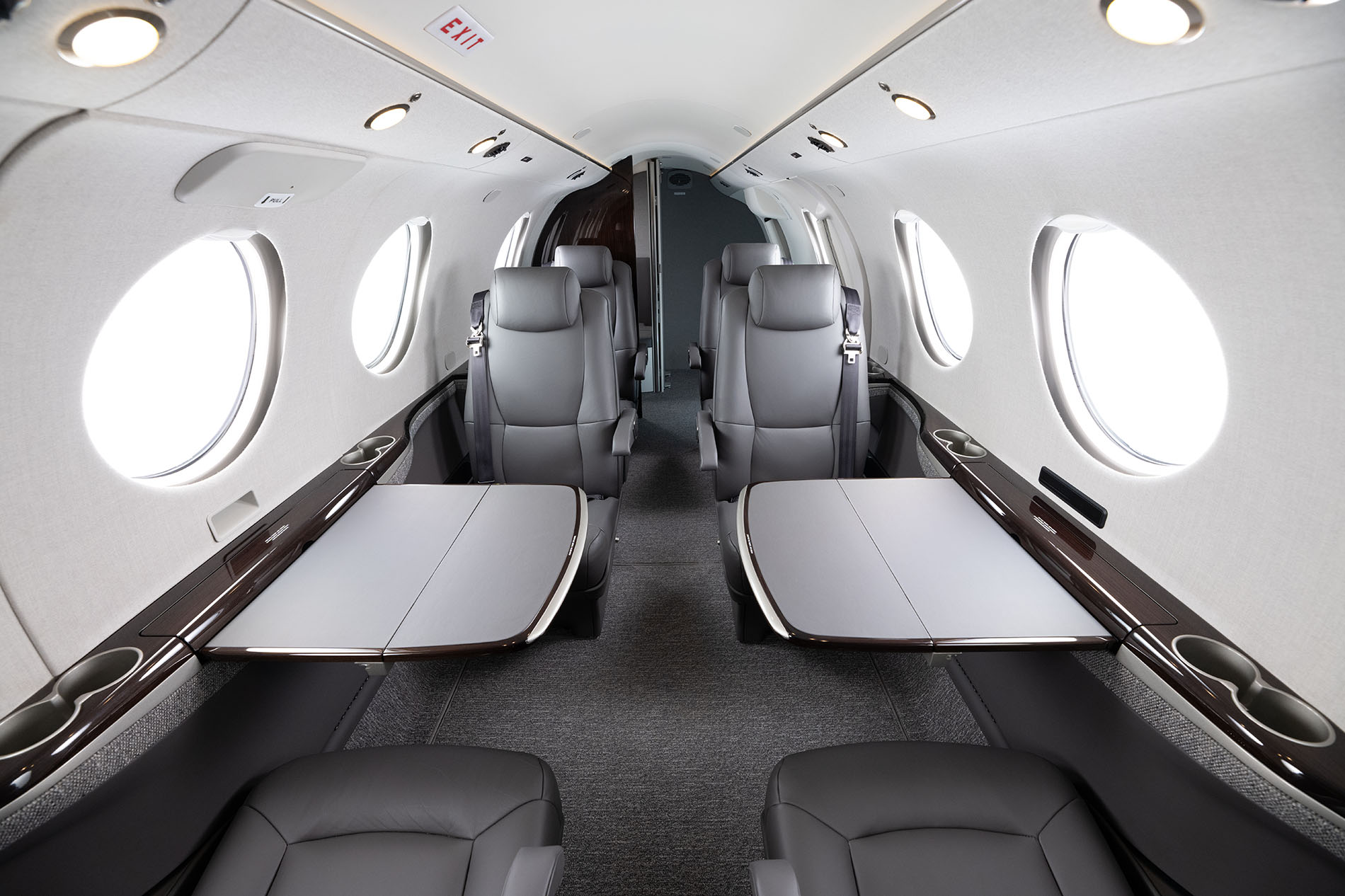
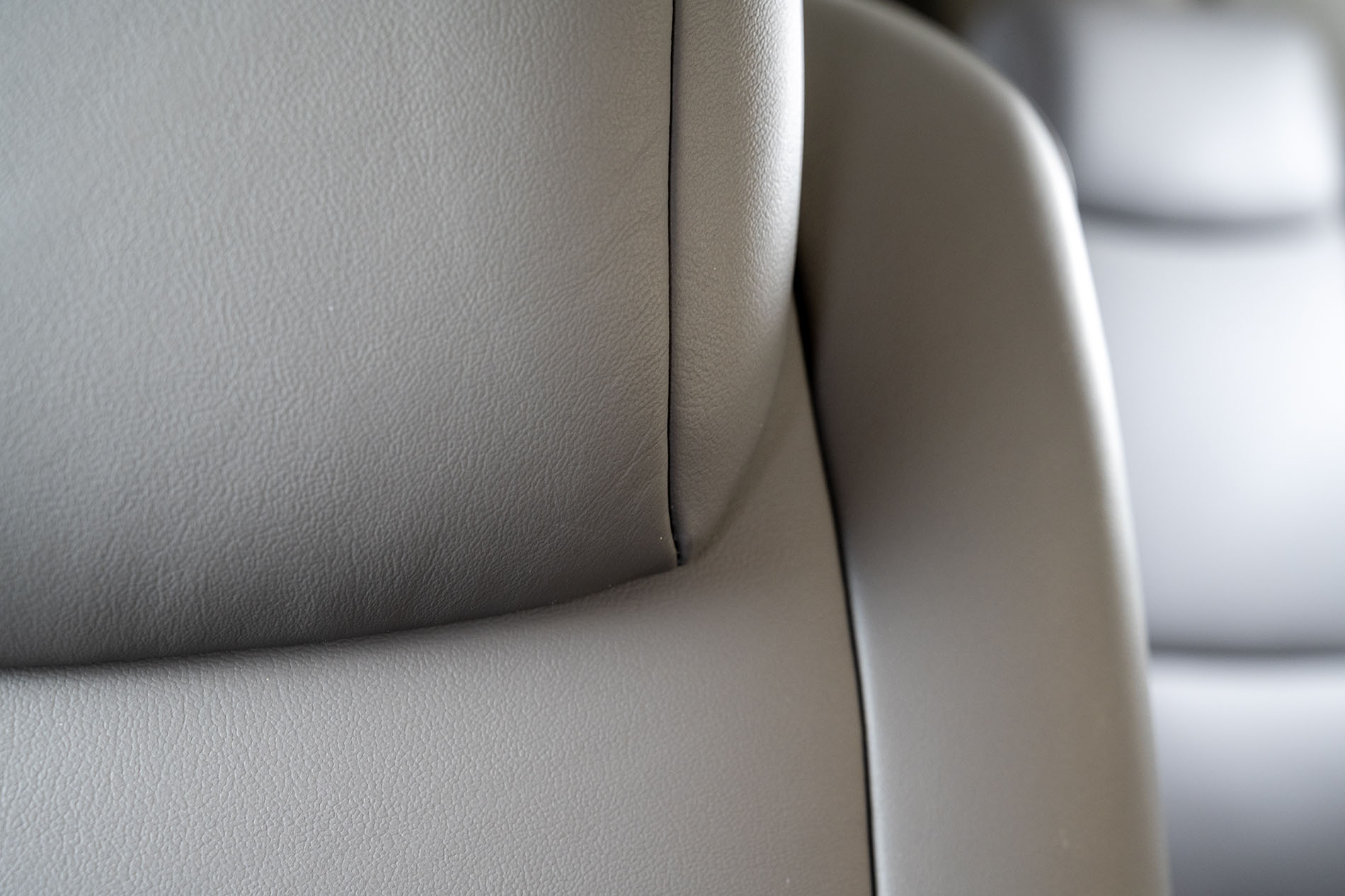
"I think when you are in the design process a lot of the time you have to use your imagination, but there's no imagining here, this is the real thing," Smisor shared about the P2 experience. "We are designing to make this airplane the best in its class in terms of the room in the interior, the layout, and the style. I think as the team installed that interior, they learned some things about how they can sequence that and make it more efficient."
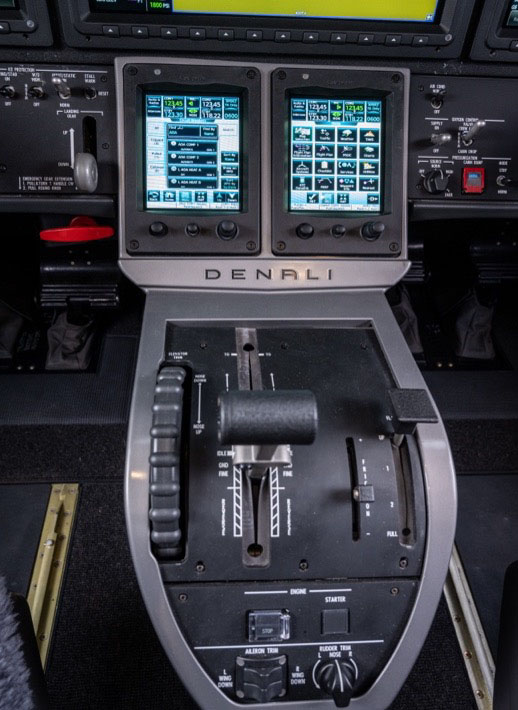
With heavy emphasis on the GARMIN G3000 avionics suite, P2 has also seen milestones including having an interior fit for configuration. Smisor adds that using customer feedback has been important in developing P2. While it may only seem like seats or window shades to some, the significance of this process mirrors the others.
“It takes a lot of effort and time, but it is well worth it because it is a learning process and because you can say this is the finished product,” he said. “Now you can look at how the air conditioning works, how the heater works, what the noise level is, how it feels and looks in the back for our customer. It is multi-purpose and very useful in a lot of areas.”
As this process continues, there is still plenty to be discovered through these three aircraft. Keeping the customer and their mission at the forefront as well as the people behind this research is what drives this progression. While the early achievement has been earned and recognized, new milestones will be reached as the aircraft moves toward completion.